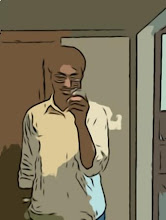Saturday, October 10, 2009
From nokia 6300 I had moved to its successor 6303.
Some interesting facts about nokia, to mark this occassion!

Mine is the one in the left!
1) The ringtone "Nokia tune" is actually based on a 19th century guitar work named "Gran Vals" by Spanish musician Francisco Tárrega. The Nokia Tunewas originally named "Grande Valse" on Nokia phones but was changed to "Nokia Tune" around 1998 when it became so well known that people referred to it as the "Nokia Tune."
2) The world's first commercial GSM call was made in 1991 in Helsinki over a Nokia-supplied network, by Prime Minister of Finland Harri Holkeri, using a Nokia phone.
3) Nokia is currently the world's largest digital camera manufacturer, as the sales of its camera-equipped mobile phones have exceeded those of any conventional camera manufacturer.
4) The "Special" tone available to users of Nokia phones when receiving SMS (text messages) is actually Morse code for "SMS". Similarly, the "Ascending" SMS tone is Morse code for "Connecting People," Nokia's slogan. The "Standard" SMS tone is Morse code for "M" (Message).
5) The Nokia corporate font (typeface) is the AgfaMonotype Nokia Sans font, originally designed by Eric Spiekermann. Its mobile phone User's Guides Nokia mostly used the Agfa Rotis Sans font.
6) In Asia, the digit 4 never appears in any Nokia handset model number, because 4 is considered unlucky in many parts of Southeast/East Asia.
7) Nokia was listed as the 20th most admirable company worldwide in Fortune's list of 2006 (1st in network communications, 4th non-US company).
8. Unlike other modern day handsets, Nokia phones do not automatically start the call timer when the call is connected, but start it when the call is initiated. (Except for Series 60 based handsets like the Nokia 6600)
9) Nokia is sometimes called aikon (Nokia backwards) by non-Nokia mobile phone users and by mobile software developers, because "aikon" is used in various SDK software packages, including Nokia's own Symbian S60 SDK.
10) The name of the town of Nokia originated from the river which flowed through the town. The river itself, Nokianvirta, was named after the old Finnish word originally meaning sable, later pine marten. A species of this small, black-furred predatory animal was once found in the region, but it is now extinct.
Labels: Facts
An interesting java program that caught my attention is the one that follows!import java.awt.BorderLayout;
import javax.swing.Icon;
import javax.swing.ImageIcon;
import javax.swing.JFrame;
import javax.swing.JLabel;
import javax.swing.JScrollPane;
public class ScrollSample {
public static void main(String args[]) {
String title = "JScrollPane Sample";
JFrame frame = new JFrame(title);
frame.setDefaultCloseOperation(JFrame.EXIT_ON_CLOSE);
Icon icon = new ImageIcon("dhoni.jpg");
JLabel label1 = new JLabel(icon);
JScrollPane scrollPane = new JScrollPane();
scrollPane.setViewportView(label1);
frame.getContentPane().add(scrollPane, BorderLayout.CENTER);
frame.setSize(300, 200);
frame.setVisible(true);
}
}
Labels: Java, Programming
Only Vivek and Sathish from third year did some justice to the program!
#include<stdio.h>
void main()
{
int x;
char c,h;
clrscr();
printf("\n Enter a character:");
scanf("%c", &c);
printf(" The first character entered was:%c",c);
printf("\n Enter another character:");
scanf("%c",&h);
printf("\n The second character entered was:%c",h);
getch();
}
Solution:
#include<stdio.h>
void main()
{
int x;
char c,h;
clrscr();
printf("\n Enter a character:");
scanf("%c", &c);
fflush(stdin);
printf(" The first character entered was:%c",c);
printf("\n Enter another character:");
scanf("%c",&h);
printf("\n The second character entered was:%c",h);
getch();
}
Explanation:
stdin, gets the character and the enter as another character and it is set to h.
So h is not input at all!
fflush is an interesting function which flushes the unwanted content from the stream!
In java too we face this problem, I will get back to that in my tutorial!
Labels: Deepak's Scribble, Programming

